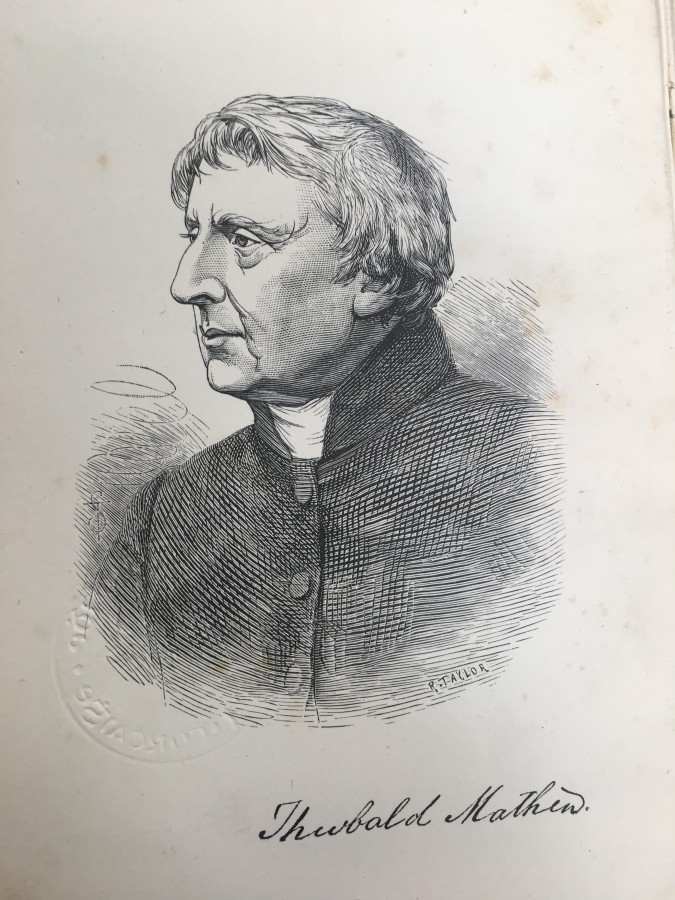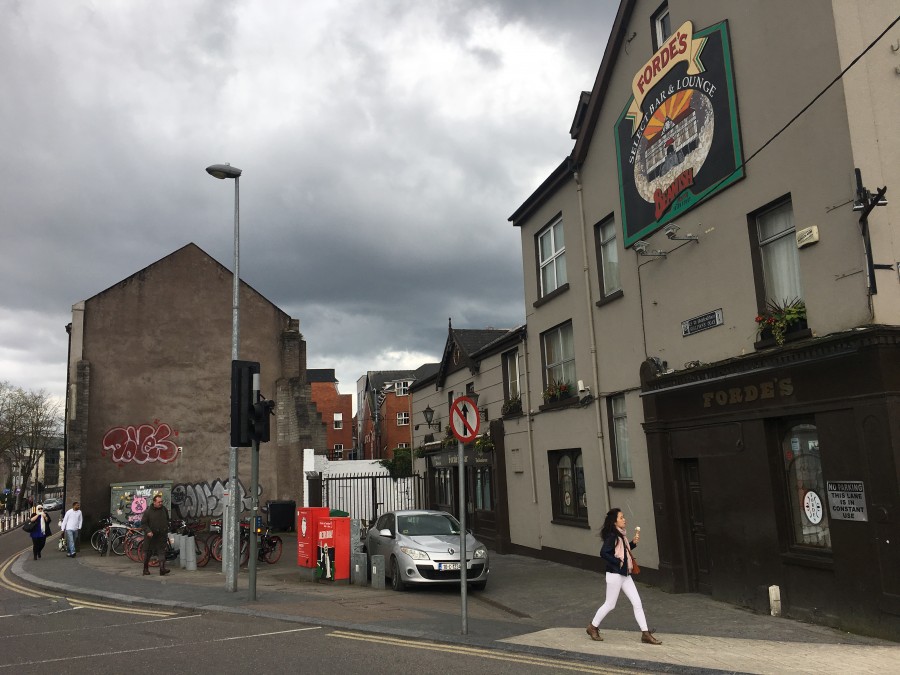Kieran’s Our City, Our Town Article,
Cork Independent, 10 May 2018
Stories from 1918: A Disappearing Band Room
One hundred years ago, in early May 1918 the upper portion of No.1 Barrack Street showed physical signs of serious deterioration and a portion of it was ordered by the engineering department of Cork Corporation to be taken down. Today, the gap in the building line is clearly visible in front of Fordes Pub, at the intersection of Sullivan’s Quay and South Gate Bridge. The Barrack Street Band started in the upper part of the premises. The premises was a focal point for the band took part in various political or social incidents. For nearly 80 years it was the rallying place for large sections of the people of the city’s south ward whose interests were identical with those of the band.
Founded in 1838 and inpired by the work of Fr Theobald Mathew, the band room and its associated temperance hall recruitment space was one of the first Cork recruiting quarter for the temperance cause. By the end of 1838, it is argued that 6,000 people were recorded on the temperance pledge register in the Cork region through the springing up of other local recruitment spaces and band spaces. The lead organisers on Fr Mathew’s campaign in the early months were James McKenna and William Martin. John Hockings, a leading teetotaller campaigner in Birmingham was also invited over to lecture to teetotallers in Cork.
By 1839, the temperance movement began to gain popular support in rest of the country. Branches were organised in surrounding towns. These included Passage, Cobh, Aghada, Whitegate, Blarney, Cloyne, Midelton, Carrigtwohill, Glanmire, Fermoy, Rathcormac, Riverstown, Ladysbridge and Carrigaline. John O’Connell was primarily involved in visiting these branches. Large numbers also began to flock to Cork from the surrounding countryside to take the pledge. By the end of 1839, the reputation of the Cork Temperance Society began to spread further into north Munster into areas like Limerick.
Within four years of the founding of the Cork Total Abstinence Society, the movement had found its way into every corner of the country. It was not a political movement; indeed Fr Mathew’s principal concern was to keep it clear of politics, but it had, nevertheless, a deep political effect. With their new-found dignity, the converts became more acutely conscious of the weaknesses that surrounded their social state and thinking inevitably led to more constant support for the national cause. The temperance movement brought an immediate accession of strength to Daniel O’Connell, his successors benefited from it, and the foundations were laid for the better things that were to follow.
Scholars John Borgonovo and Jack Santino in a book entitled Public Performances: Studies in the Carnivalesque and Ritualesque (2017) note that Fr Mathew encouraged the formation of temperance brass bands at the local level to gather crowds for pledge meetings and to offer non-alcoholic entertainment to working classes. Band practice kept men out of the public house, while Sunday band processions and concerts served as a wholesome nonalcoholic family events that spread the temperance message. bands were locality based and had numerous followers who would accompany them on excursions through the city. At the movement’s height the city of Cork maintained thirty-three temperance bands, with uniforms financed by Father Mathew. The instructors of the Barrack Street Temperance Band at this time and up to the 1870s were non-existent; but according to tradition the military bands had a great influence on them Brass bands often developed alongside reading rooms. Working class self-improvement was a key point.
At the Annual Temperance Rally in late March 1842, the Cork Examiner notes the location of the event was at the new Corn Market (now Cork City Hall site). It was densely crowded with countless societies, each headed by its band of 20 or even 30 musicians. According to the media, there was much pomp and ceremony; “members dressed with blue, or pink, or green scarfs of Irish Manufacture, and holding a long white wand decorated with colored ribbons or laurel. Before the several societies was borne a flag or banner, generally with either the name of the particular room to which they belonged, some having painted on them an appropriate device, or allegorical representation, and, in many at least 23 city bands, each containing 20 to 30 musicians, participated in a huge temperance procession through the centre of Cork. Many came from poor localities such as Fair Lane, Blarney Street, Blackpool and the Barrack Street area. cases, a full-length figure of the Apostle himself”. In further newspaper articles across the Cork Examiner in the ensuing two years, it is revealed that up to 55 bands became operational.
Local historian, Richard T Cooke in his book Cork’s Barrack Stret Silver and Reed Band (1992) recorded from the band’s annals that the No 1 Barrack Street building comprised three storeys and was constructed at the end of the eighteenth century. The society occupied the first and second floors of the building. On the first floor was the society’s reading and recreation room and the second floor housed the bandroom where instruments and banners weres tored. Its rooms were quite spaciousand well-lit with the main entrance on Sullivan‘s Quay, No. 37. The building had no water supply, drains or backyard; and, therefore no outhouse forpublic convenience. The opening hours of the society were from 7pm to 11pm each evening and remained open all day Sunday.When the building was condemned in 1918, the Barrack Street Band moved to Tuckey Street for a time.
Captions:
945a. South Gate Bridge c.1900 (picture: Cork City Library)
945b. Portrait of Fr Theobald Mathew from Frank J Mathew’s (1890) Fr Mathew’s Life and Times (source: Cork City Library)
945c. Site of No. 1 Barrack Street, present day (picture: Kieran McCarthy)


